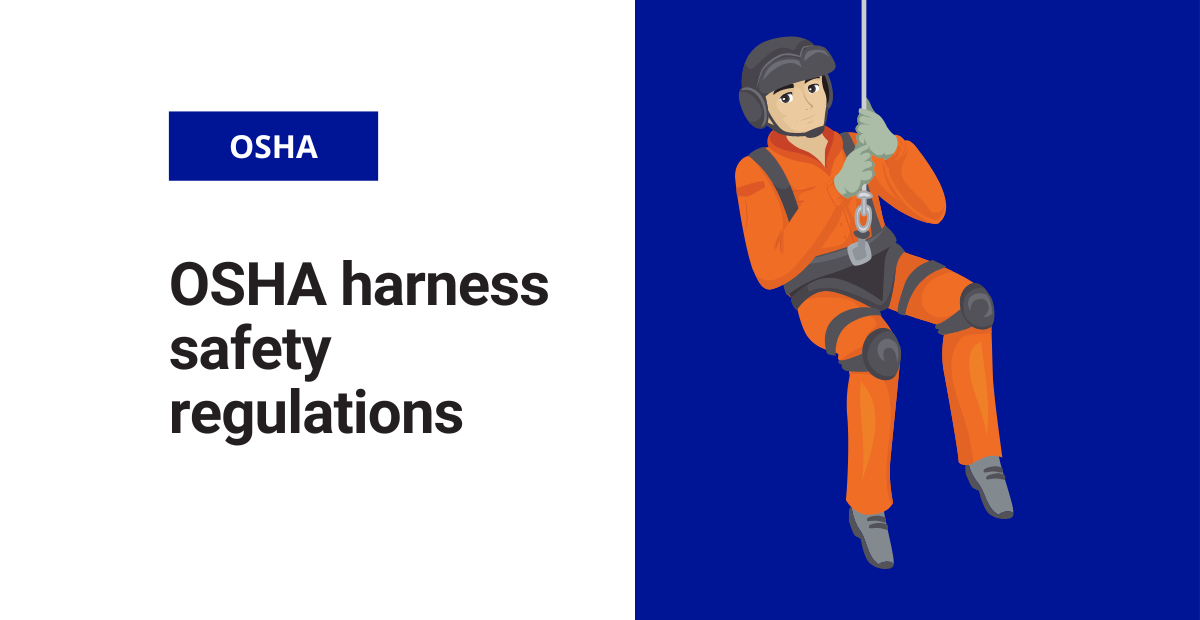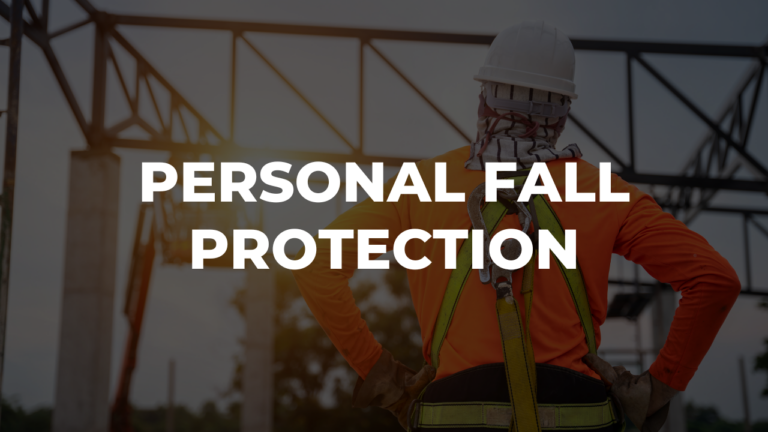In 2022, fall protection was (once again) the number one OSHA violation. And it has held the top spot for more than a decade.
Working at heights poses a significant risk to worker safety, which is why OSHA has many requirements for PPE. And safety harnesses are an essential tool for protecting workers from fall hazards.
Businesses must understand harness safety OSHA requirements to prevent accidents and protect themselves from citations. You can brush up on your knowledge by reviewing the guidelines below. For a full review of harness safety regulations, check out OSHA Standard 1910.140: Personal fall protection systems.
General harness safety requirements
OSHA’s fall protection standard states that companies must supply workers with harnesses that fit properly and are in good condition. You should take a regular equipment inventory to ensure that you have enough harnesses for your staffing needs.
Another important requirement is that workers know how to use harnesses correctly. This means that anyone exposed to fall hazards must receive fall protection training. It’s also a good idea to complete regular refresher training, especially when an incident occurs within your worksite.
Regarding attaching harnesses to anchor points, OSHA says that they attachment must be “located in the center of the employee’s back near shoulder level.” The only alternative to this requirement is “if the free fall distance is limited to 2 feet (0.6 m) or less,” you can have the attachment in a pre-sternal condition.
The harness safety OSHA standard also requires that you:
- Only use harnesses for personal protection, not for moving materials
- Recover a suspended employee promptly after a fall incident
- Ensure that lifelines are designed and installed correctly for fall arrest safety
When it comes to the fall arrest system itself, here are some technical regulations:
- The fall arrest system must be strong enough to tolerate at least twice the impact energy from a free fall of 6 feet (or the system’s intended free fall distance).
- 1,800 pounds is the maximum arresting force that the system can put on a worker.
- The system must provide a full stop and have a maximum deceleration distance of 3.5 feet.
- A harness system cannot have straps that touch a worker’s neck or chin area.
In addition to following these guidelines, there are also a few inspection-related tasks you must perform.
Inspecting harness safety
Under OSHA guidelines, you must ensure that workers inspect their harnesses before each use. This means you’ll need to teach them how to perform an inspection during safety training. Include the following topics:
- How to attach lanyards to anchor points
- How to identify signs of wear and tear
- How to wear a harness correctly (adjusting, overall fit, etc.)
- How to inspect anchor points
Also, if a harness sustains an impact, you must remove it from service until you inspect it properly for signs of damage. Look for signs of overstretching, damaged threads, and missing components. Even the smallest issue can render the harness unsafe, so it’s important to be thorough.
[Have your employees use our safety harness inspection checklist before each use.]
Anchor point guidelines
Aside from the harness itself, OSHA also details anchor point requirements. Here are some of the highlights:
All anchorage systems need to be strong enough to support 2-4 times the weight of the worker. It’s also critical that components for these systems are rated for your intended use.
On PIT equipment, anchorages must be overhead of the platform and located near its center.
Anchorages must either support a minimum of 5,000 pounds per employee attached to them. Alternatively, their use can be supervised by a qualified person who ensures that the system has a safety factor at or above two. Note: These requirements are different for window cleaners’ belts. You can find those guidelines in paragraph (e) of the OSHA standard.
Like harnesses, anchorages need regular inspection. Look for things like:
- Damage to structural components
- Loose anchor points
- Cracks, breaks, etc.
If you want more information on the acceptable materials for anchorages, harnesses, lifelines, belts, and more, check out the OSHA standard in its entirety here.




